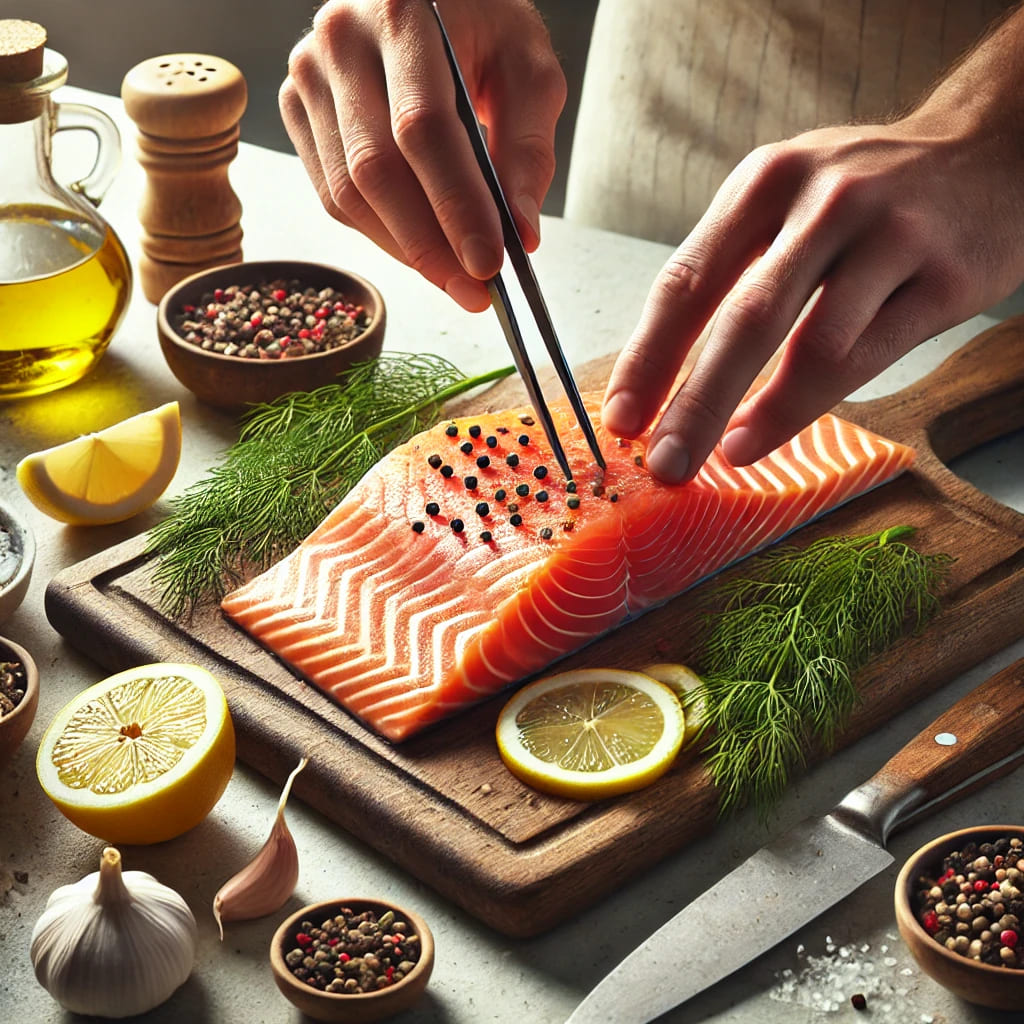Chamberlains of London – Salmon is a favorite among seafood enthusiasts for its rich flavor, versatility, and health benefits. Whether you’re planning a simple dinner or a gourmet feast, understanding how to choose and cooking perfect salmon can elevate your dish. Here’s a complete guide to help you select the perfect cut and prepare it to be cook.
Choosing the Perfect Salmon
When buying salmon, quality is key. Here are some factors to consider:
- Freshness is Crucial
Fresh salmon should have a mild, ocean-like smell. Avoid fish with a strong “fishy” odor, as it may indicate spoilage. Look for firm, moist flesh that bounces back when touched. - Inspect the Appearance
Fresh salmon has a vibrant color—usually pink or orange, depending on the species. Avoid fish with dull or discolored patches. If buying whole salmon, check that the eyes are clear and not cloudy. - Know Your Types of Salmon
Different types of salmon suit different cooking styles: - Atlantic Salmon: Mild flavor, good for grilling or baking.
- Sockeye Salmon: Rich, bold taste; excellent for grilling or roasting.
- King Salmon: High fat content, making it ideal for grilling or pan-searing.
- Coho Salmon: A milder option, great for poaching or sautéing.
- Decide Between Wild and Farmed
- Wild Salmon: Typically leaner with a deeper flavor, often preferred for grilling.
- Farmed Salmon: More budget-friendly and versatile, with a milder taste.
- Opt for Sustainable Choices
Look for certifications such as MSC (Marine Stewardship Council) or ASC (Aquaculture Stewardship Council) to ensure your salmon is sustainably sourced.
Prepping Your Salmon
Once you’ve selected your salmon, proper preparation is essential:
- Remove Pin Bones
Use tweezers to gently pull out any pin bones. Run your fingers along the flesh to locate them. - Pat Dry
Before seasoning or cooking, pat the salmon dry with a paper towel. This helps achieve a crispy exterior when searing or grilling. - Seasoning Basics
Salmon doesn’t need heavy seasoning. A sprinkle of salt and pepper enhances its natural flavor. For added depth, consider using garlic, dill, lemon zest, or a touch of smoked paprika.
Cooking Techniques for Perfect Salmon


Salmon is versatile and can be cooked using a variety of methods. Here are some popular techniques:
- Pan-Seared Salmon
Pan-searing creates a crispy skin while keeping the flesh tender. - Heat oil in a skillet over medium-high heat.
- Place the salmon skin-side down and cook for 3-4 minutes.
- Flip and cook for another 2-3 minutes, depending on thickness.
- Grilled Salmon
Grilling adds a smoky flavor that complements the richness of salmon. - Preheat the grill and lightly oil the grates.
- Cook salmon on medium heat for 4-6 minutes per side.
- Use a cedar plank for added flavor.
- Baked Salmon
Baking is a foolproof method that locks in moisture. - Preheat the oven to 375°F (190°C).
- Place the salmon in a baking dish, season, and bake for 12-15 minutes.
- Poached Salmon
Poaching yields delicate, tender salmon. - Simmer water with lemon slices, dill, and peppercorns.
- Submerge the salmon and cook for 8-10 minutes.
- Broiled Salmon
Broiling caramelizes the top layer for a slightly crispy texture. - Place salmon on a baking sheet and broil for 5-7 minutes.
- Watch closely to avoid burning.
Tips for Perfect Salmon Every Time
- Don’t Overcook
Salmon is done when it flakes easily with a fork but still retains some translucency in the center. Use a meat thermometer to ensure an internal temperature of 125°F (52°C) for medium-rare. - Let it Rest
Allow salmon to rest for a few minutes after cooking to redistribute its juices. - Pair with Complementary Sides
Serve salmon with roasted vegetables, wild rice, or a fresh salad. Lemon wedges and herb-infused butter make excellent accompaniments.
Storing and Reheating Leftovers
If you have leftovers, store salmon in an airtight container in the refrigerator for up to three days. To reheat, place it in a skillet over low heat or wrap it in foil and warm it in the oven.
With these tips, you’re well-equipped to choose and cook salmon like a pro. Whether you’re searing a fillet for a quick dinner or grilling for a special occasion, mastering the art of salmon preparation will ensure delicious results every time.
